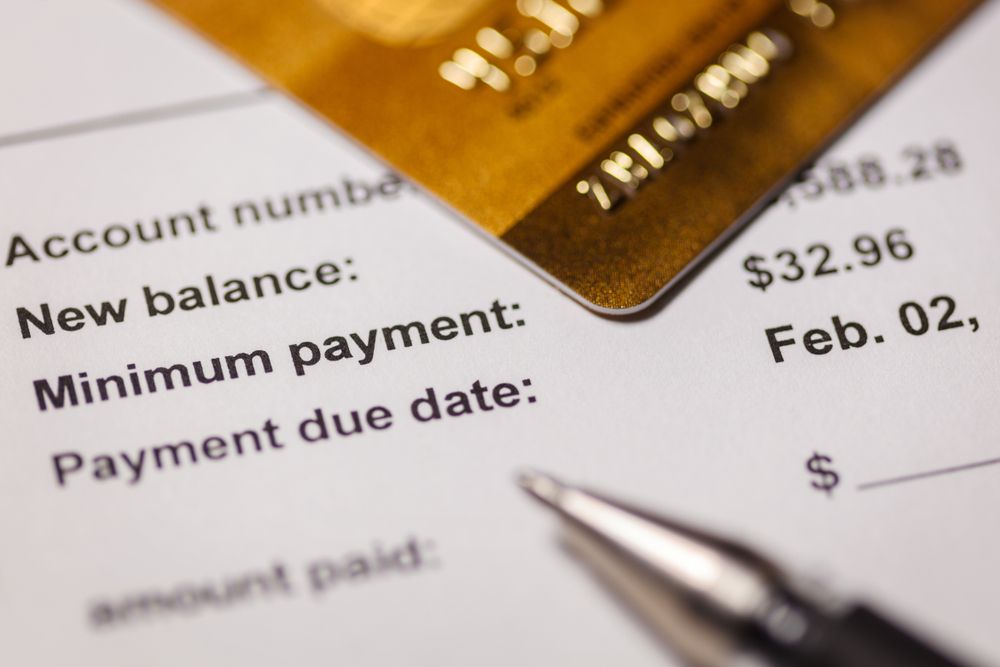
When it comes to managing credit card debt, understanding the concept of minimum payments is crucial. Minimum payments are the smallest amount you can pay each month to keep your account in good standing. While making these payments may seem like an easy way to manage your finances, they can have long-term implications on your financial health. In this article, we’ll delve into the world of minimum payments to help you make informed choices that can positively impact your financial journey.
What Are Minimum Payments?
Minimum payments are a feature of credit cards and some loans that allow borrowers to pay a small, fixed amount each month instead of the full balance. The minimum payment is typically calculated as a percentage of your total balance, including interest and fees, or a fixed dollar amount, whichever is higher. Credit card companies set these minimum payment requirements to ensure they receive a portion of what you owe them on a regular basis.
Understanding how your minimum payment is calculated is important. It includes the interest accrued during the billing cycle, a portion of the principal owed, and any fees incurred. By just paying the minimum, you are mostly covering the interest, with a smaller portion going toward reducing the principal balance.
The Impact of Making Only Minimum Payments
Making only the minimum payment on your credit card can be a tempting option, especially if you’re facing financial difficulties. However, by doing so, you are prolonging the time it will take to pay off your debt and increasing the total interest you will pay over time.
The reason for this is compounding interest. Credit card companies charge interest on the remaining balance, which means if you’re only paying the minimum, you’re not significantly reducing your principal balance. Over time, the interest charges will continue to accumulate, and you’ll end up paying much more than you originally borrowed.
To illustrate, let’s say you have a $1,000 balance on a credit card with an 18% annual percentage rate (APR). If your minimum payment is 3% of the balance or $25 (whichever is higher), it could take you more than five years to pay off the debt and cost you hundreds of dollars in interest if you only make the minimum payments.
Strategies to Pay More Than the Minimum
Paying more than the minimum payment can help you reduce your debt faster and save money on interest. Here are a few strategies to consider:
- Budgeting: Create a budget that prioritizes your credit card payments. Allocate any extra funds towards paying down your credit card debt.
- Snowball Method: Focus on paying off the card with the smallest balance first while making minimum payments on the others. Once it’s paid off, apply the same payment to the next smallest balance.
- Avalanche Method: Prioritize paying off the card with the highest interest rate first while making minimum payments on the others. This can save you the most money in interest over time.
- Balance Transfer: Consider transferring your balance to a credit card with a lower interest rate or a 0% APR introductory offer. This can give you a break on interest and help you pay down the balance faster.
By implementing these strategies, you can take control of your debt and reduce the amount of interest you pay.
Long-Term Consequences of Minimum Payments
Making only the minimum payments on your credit card can have long-term consequences that extend beyond just paying more interest. It can also affect your credit score. High outstanding debt compared to your credit limit can increase your credit utilization ratio, which can negatively impact your score.
Furthermore, relying on minimum payments can create a cycle of debt that’s hard to escape. As you continue to accrue interest, your balance grows, and if you continue to use your credit card for purchases, you’ll find it increasingly difficult to pay down the debt.
Finally, carrying high levels of debt can limit your financial options in the future. It can make it harder to qualify for loans, including mortgages, and can lead to higher interest rates when you do borrow money.
How to Avoid the Minimum Payment Trap
Avoiding the minimum payment trap is key to maintaining healthy finances. Here are some tips:
- Spend Wisely: Only use your credit card for purchases that you can afford to pay off in full each month.
- Emergency Fund: Build an emergency fund so you don’t have to rely on credit cards for unexpected expenses.
- Monitor Your Statements: Keep an eye on your credit card statements to track your spending and adjust your budget if necessary.
- Set Up Payment Reminders: Ensure you always pay on time and consider setting up automatic payments for more than the minimum amount.
- Seek Professional Advice: If you’re struggling to manage your debt, talk to a financial advisor or credit counselor who can help you develop a plan to get back on track.
While minimum payments might seem like a convenient solution for managing your credit card debt, they can have significant negative effects on your overall financial health. By understanding the impact of minimum payments and taking proactive steps to manage your debt, you can save money on interest, improve your credit score, and achieve financial stability. As with all financial matters, being informed and making strategic decisions is the key to success.
